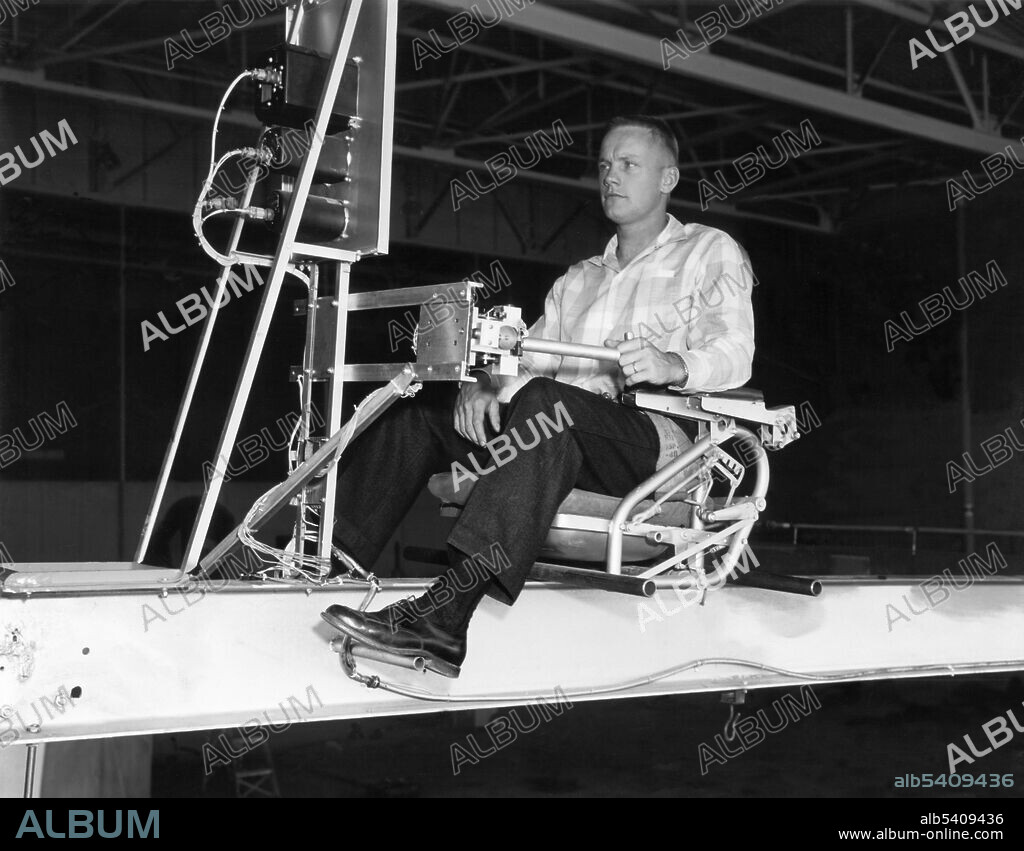alb5409436
Neil Armstrong Flies Iron Cross Simulator,1956

|
Añadir a otro lightbox |
|
Añadir a otro lightbox |



¿Ya tienes cuenta? Iniciar sesión
¿No tienes cuenta? Regístrate
Compra esta imagen.
Selecciona el uso:

Título:
Neil Armstrong Flies Iron Cross Simulator,1956
Descripción:
Ver traducción automática
Neil Armstrong flies the Iron Cross Simulator. The Iron Cross was a ground-based simulator for testing early reaction controls. It is primarily orbital, suborbital and hypersonic vehicles that require reaction control capability, but it was recognized in the 1950s that the earliest flight evaluation of reaction controls would occur with supersonic research aircraft. It was also believed that the flight research should be preceded by ground-based simulation studies. The pioneering jet reaction simulation work at NACA High-Speed Flight Station was a two-phase study; one was a fixed-base setup with an analog computer to solve the equations of motion and the other used a three-degree-of freedom mechanical simulator wherein the pilot experienced motions. The Bell X-1B airplane offered an ideal testbed for a trial reaction control installation. In preparation, NACA High-Speed Flight Station technicians built an iron-frame simulator, dubbed the Iron Cross, which matched the dimensions and inertial characteristics of the X-1B, installing small reaction control thrusters on it and then mounting it on a universal joint so that a test pilot could maneuver it in pitch, roll, and yaw. The universal joint from a truck permitted motion about the three axes. High-pressure nitrogen gas was expanded selectively through the six jet nozzles to provide the reaction forces. Flight-type recorders were used to record control stick position and the various angular rates. October 8, 1956.
Personas:
Crédito:
Album / NASA/Science Source
Autorizaciones:
Modelo: No - Propiedad: No
¿Preguntas relacionadas con los derechos?
¿Preguntas relacionadas con los derechos?
Tamaño imagen:
4200 x 3271 px | 39.3 MB
Tamaño impresión:
35.6 x 27.7 cm | 14.0 x 10.9 in (300 dpi)
Palabras clave:
AMERICA • BLANCO Y NEGRO • ESTADOS UNIDOS DE AMERICA • FAMOSA • FAMOSO • FOTO • HISTORIA CIENCIA • HISTORIA • NACA • NASA • NEIL ARMSTRONG • PERSONALIDAD • S. XX • SIGLO XX
 Pinterest
Pinterest Twitter
Twitter Facebook
Facebook Copiar enlace
Copiar enlace Email
Email
